Akron, OH Pollen and Allergy Report for Summer 2023
Pollen Allergy Trends in Akron, OH
When is pollen lowest in Akron, OH?

February
Lowest month total PPM
Avg. PPM
When is pollen highest in Akron, OH?

April
Highest month total PPM
Avg. PPM
How does pollen in Akron, OH compare to Ohio?
Akron has a higher average PPM than the state of Ohio.
Akron yearly avg PPM:
Ohio yearly avg PPM:
How does pollen in Akron, OH compare to the USA?
Akron has a lower average PPM than the USA.
Akron yearly avg PPM:
USA yearly avg PPM:
Is pollen worse this year in Akron, OH?
Spring 2023 was worse than spring 2022.
Spring 2023 PPM:
Spring 2022 PPM:
Average PPM in Akron, OH
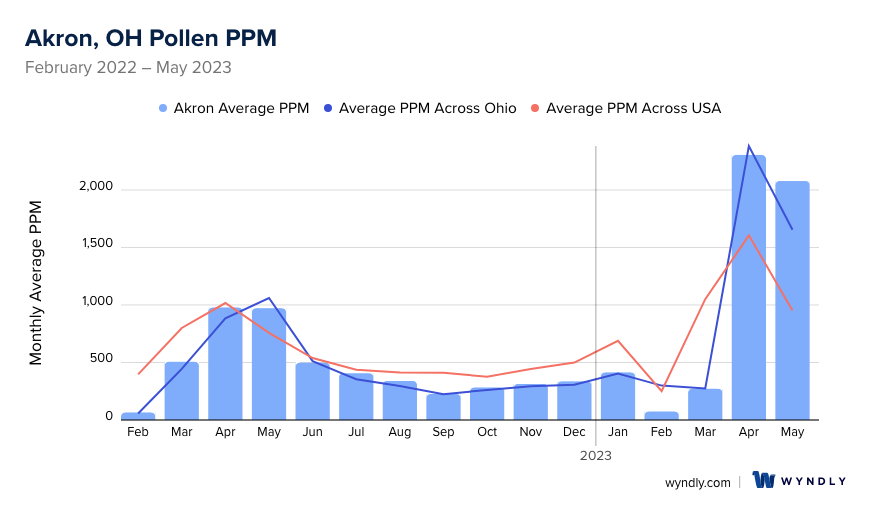
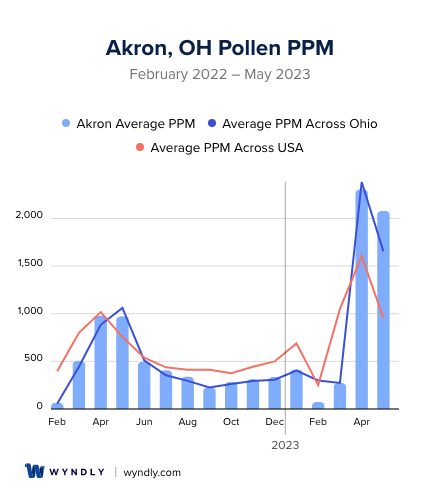
Akron, OH Pollen and Allergy Breakdown by Month
Grass
When is grass pollen highest in Akron, OH?
April has the highest grass pollen in Akron, OH with an average PPM of
When is grass pollen lowest in Akron, OH?
November has the lowest grass pollen in Akron, OH with an average PPM of
Tree
When is tree pollen highest in Akron, OH?
April has the highest tree pollen in Akron, OH with an average PPM of
When is tree pollen lowest in Akron, OH?
January has the lowest tree pollen in Akron, OH with an average PPM of
Weed
When is weed pollen highest in Akron, OH?
April has the highest weed pollen in Akron, OH with an average PPM of
When is weed pollen lowest in Akron, OH?
February has the lowest weed pollen in Akron, OH with an average PPM of
Akron, OH Pollen Monthly Breakdown by Pollen Type
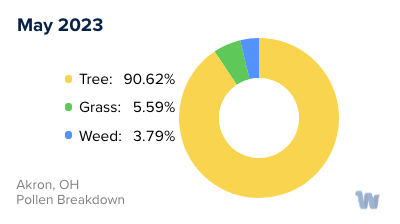
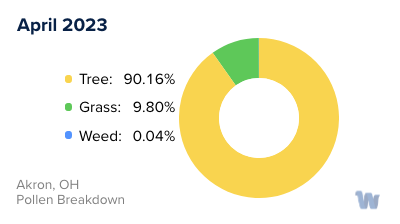
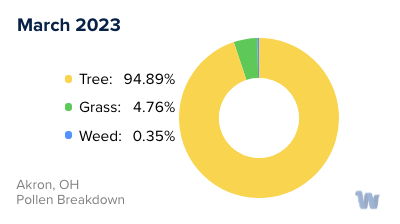
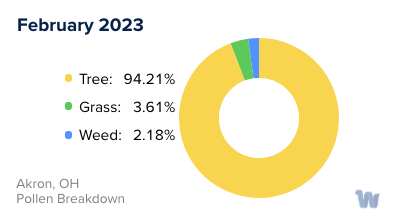
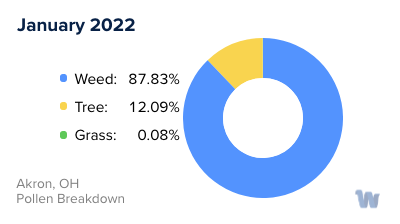
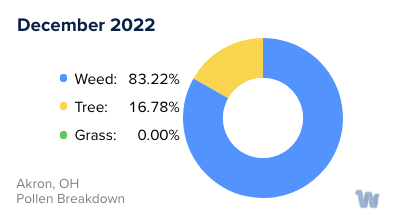
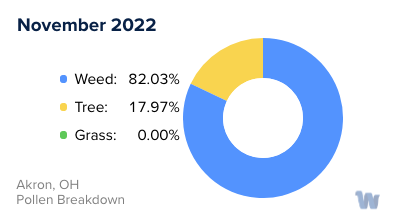
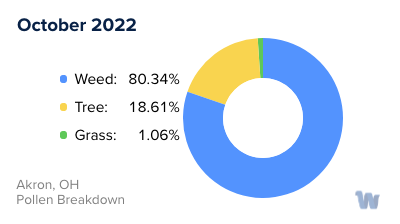
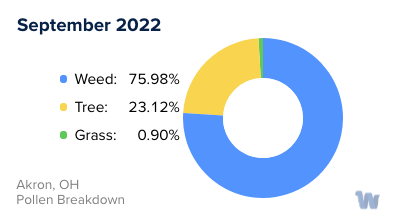
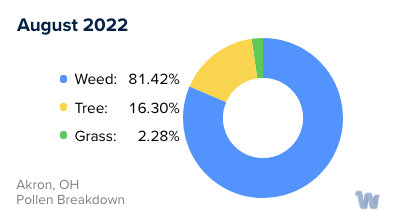
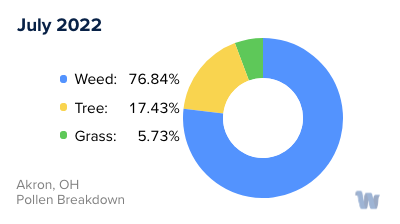
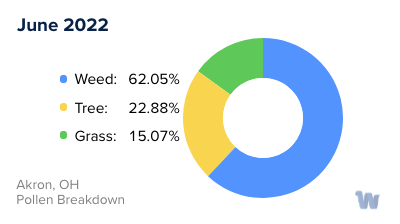
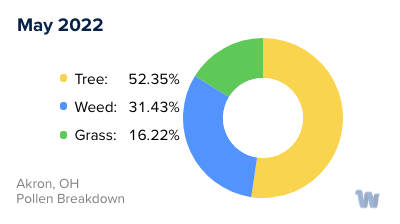
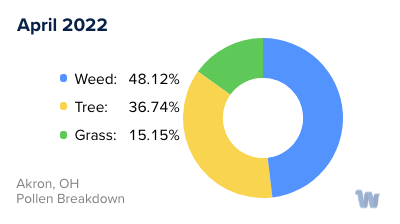
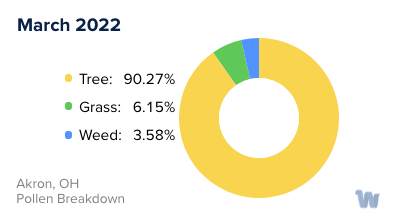
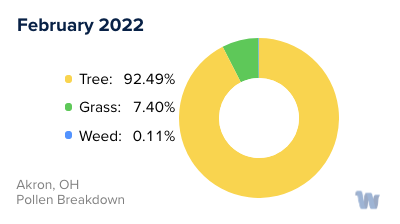
Pollen and Hay Fever in Akron, OH
Pollen allergies and hay fever, collectively referred to as seasonal allergic rhinitis, are significant health concerns for residents of Akron, Ohio. The city, renowned for its vibrant natural beauty and diverse botanical life, unfortunately, also sets the stage for these common allergic reactions.
During the spring and early summer, pollen from trees such as oak, maple, and birch becomes airborne, impacting susceptible individuals. As the seasons transition, grasses such as timothy, Kentucky bluegrass, and ryegrass begin to pollinate, contributing to the pollen count. By late summer and into fall, ragweed becomes the predominant allergen.
Akron's location within the humid continental climate zone exacerbates these issues. The city's weather, characterized by warm, humid summers and cold, snowy winters, creates the perfect conditions for plants to thrive and subsequently produce high volumes of pollen. Changes in temperature and humidity levels can trigger the release of these microscopic particles, which are then carried on the wind, causing discomfort to those with sensitivities.
Hay fever, the common term for these pollen allergies, manifests in several uncomfortable symptoms. Affected individuals may experience sneezing, itchy or watery eyes, a runny nose, and a scratchy throat. Furthermore, these symptoms can significantly impact daily life, leading to sleep disturbances and decreased productivity in school or at work.
In Akron, the pollen season typically starts in early spring and can last until the first frost in the fall. The highest pollen counts are often observed in the early morning hours, making this a particularly challenging time for individuals with allergies. Furthermore, sunny, windy days can cause pollen counts to surge, while rainfall can temporarily alleviate the issue by washing pollen from the air.
In conclusion, pollen allergies and hay fever pose a significant challenge for Akron's residents due to the city's rich botanical diversity and climate. An understanding of the sources and triggers of these allergies is key to managing the quality of life during the pollen seasons, without resorting to specific treatments or remedies.

